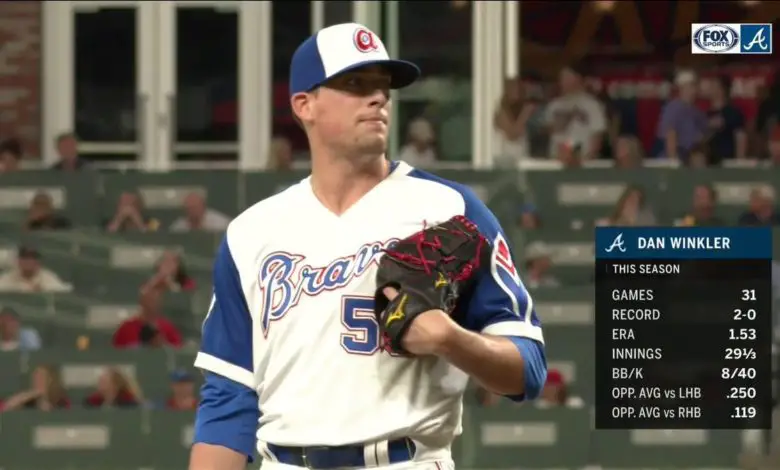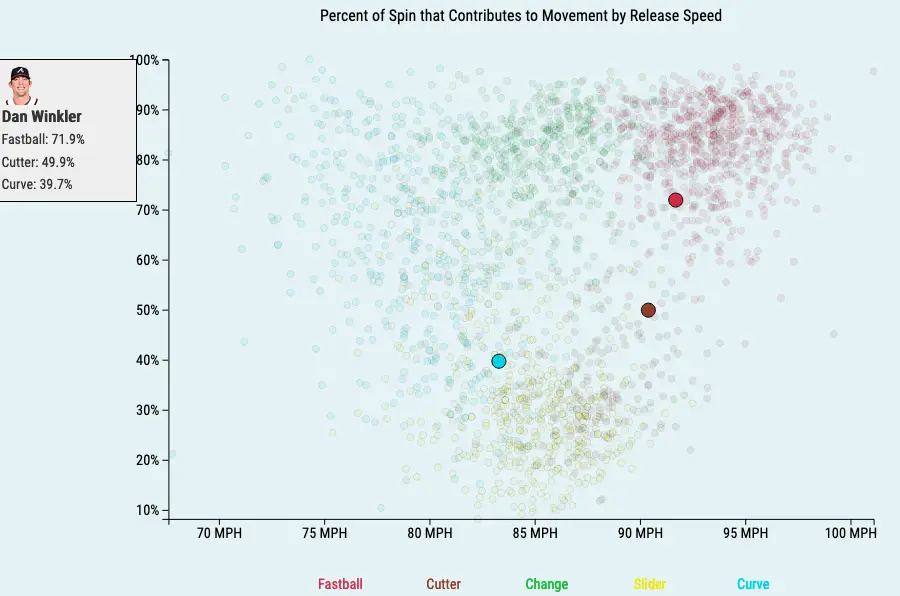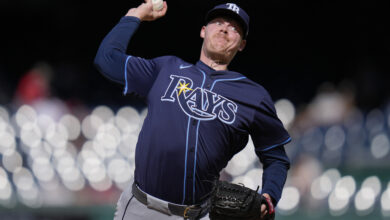
Changing Dan Winkler’s Mechanics Could Unlock Potential of Elite Spin Rate
Reliever represents early test for new pitching infrastructure
Add the enigma of Dan Winkler’s spin rate to the list of items new Cubs pitching director Craig Breslow will need to figure out. The Cubs just signed Winkler, a 6-foot-3 righty reliever, to a split deal Friday as a way to add bullpen depth, but they might have identified some untapped potential. While the former Brave has showcased top-tier spin rate in his 100.1 MLB innings, he hasn’t efficiently translated that to actual movement and could get better results with a few tweaks.
Winkler’s performance resulted in him spending about half the season in Triple-A prior to being designated for assignment in August, but his fastball spin rate ranked among the top 8% of MLB last season. Not only was Winkler able to generate more than 2500 RPM on his fastball, but he consistently threw heat with tight spin. We can visualize this by plotting the distribution of Winkler’s four-seam spin rate against all other MLB pitchers.

Okay, cool, but why hasn’t Winkler been a shut-down, high-leverage reliever? The answer is multi-faceted, but one explanation could be a suboptimal mechanics. Though Winkler’s horizontal release point is essentially within league range, his vertical release point is lower than 80% of right-handed pitchers.

That could have a negative effect on his “active spin rate,” which is the amount of spin that contributes to actual movement. Pitchers who throw with similar speed tend to have around 85% active spin compared to Winkler’s 71.9%, making him one of the worst pitchers in active spin rate across all pitch types.

According to Driveline Baseball, a pitcher’s arm slot significantly predicts movement. More specifically, it predicts the orientation of his fingers and hand on the baseball, which dictates movement. It’s not unreasonable to conclude that Winkler’s extraordinarily low release point may not permit him to achieve optimal hand and finger orientation, which would explain why his spin rate isn’t translating to significant movement.
By now, you’ve probably already seen where I’m going with this post. The Cubs could have zeroed in on this same quirk in Winkler’s mechanics and brought him in hoping that Breslow and the new pitching development infrastructure would be able optimize them. Maybe they can identify specific tendencies with the tools in the pitch lab, messing with grips and release point to unlock the value of Winkler’s elite spin rate.
This is exactly the type of pitcher the Cubs should be targeting with their low-risk depth moves. If Winkler doesn’t make a single change and is just another mediocre righty, no loss. But if he’s able to alter his mechanics to optimize his pitches, particularly the fastball, the Cubs might have landed a high-leverage reliever for a crazy bargain.

